The Great Pyramid, located at Giza on the west bank of the Nile River in Egypt, is the only wonder of the ancient world that has survived to the present day. However, the pyramid isn’t just an ancient wonder. This simple but powerful angled shape has managed to survive into modern times, and contemporary architects continue to build pyramids that are no less stunning.
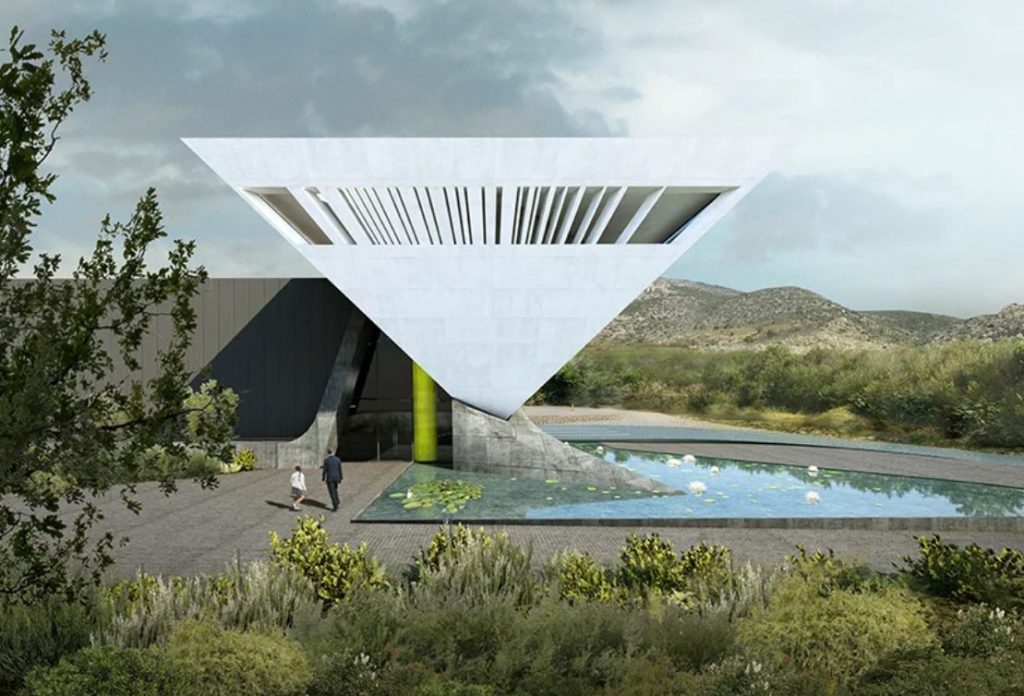
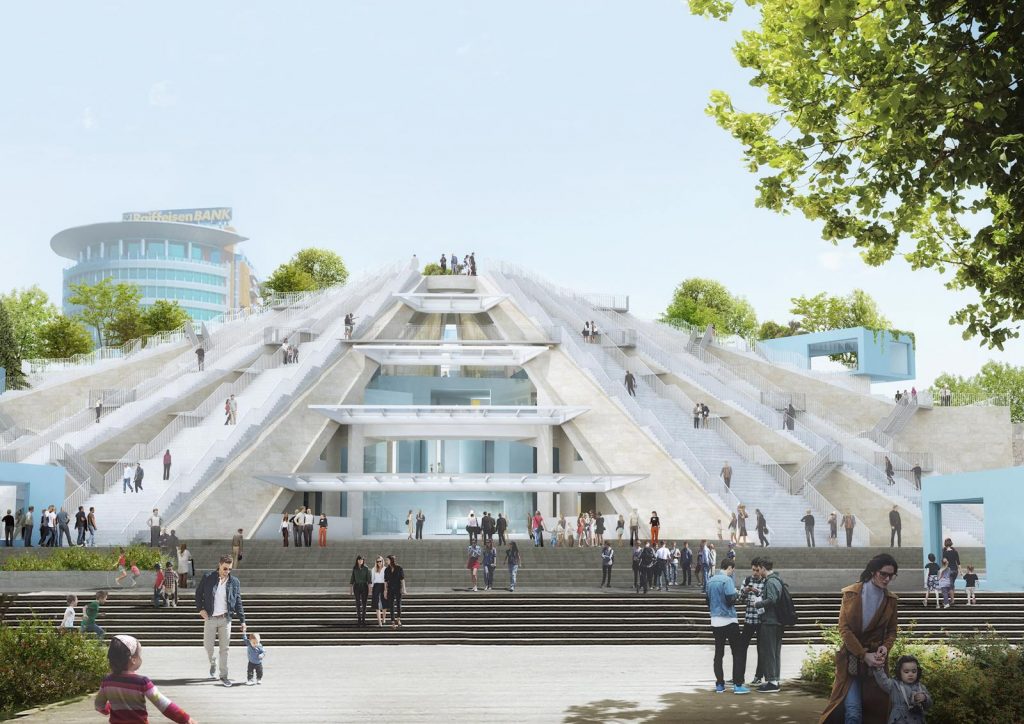
The Pyramid of Tirana by MVRDV
Pyramid of Tirana in the Albanian capital has had several lives in the past. Originally constructed in the 1988 as a museum dedicated to Enver Hoxha, which was closed following the collapse of Communism in the country, has also served as a temporary base for NATO during the War in Kosovo, a nightclub, and an event space, as well as a canvas for graffiti and a giant slide. For many Albanians the Pyramid is now the symbol of the victory over the regime.

The Pyramid of Tirana by MVRDV
Dutch architecture studio MVRDV has been commissioned by non-profit educational institution TUMO Tirana to convert the brutalist building into a youth-focused cultural hub returning the Pyramid and the surrounding plaza to their function as an important central point for cultural life in Tirana.
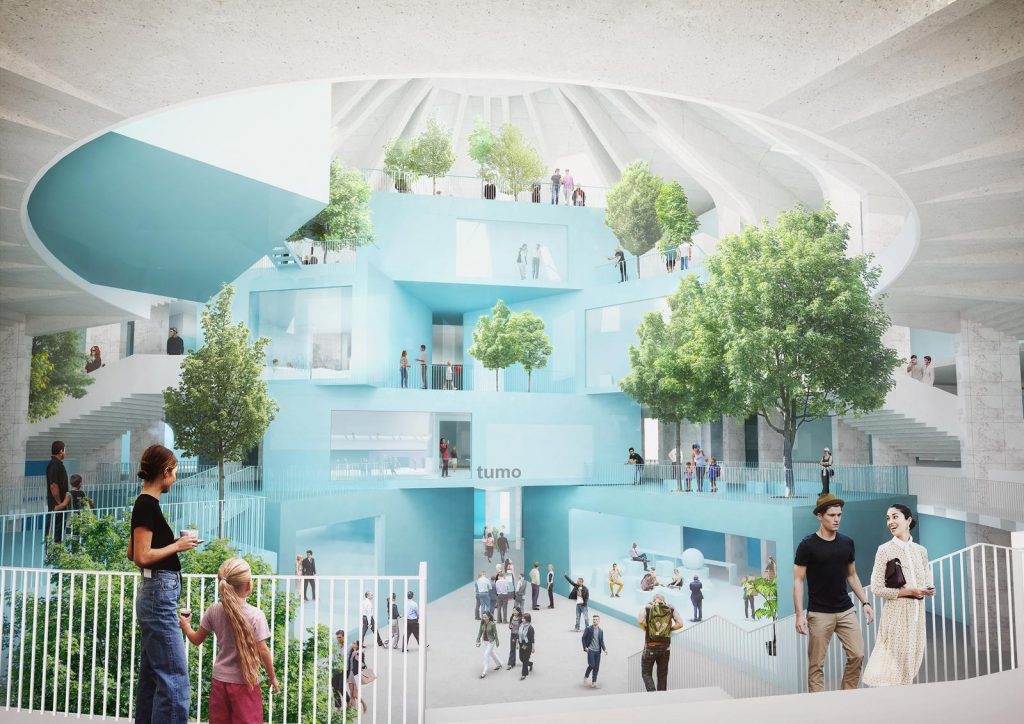
The Pyramid of Tirana by MVRDV
Convinced that historic brutalist buildings are ideal for reuse, the team has chosen to remove additions from previous renovations to reveal a voluminous 11,835m2 interior space and radically open up the building, which is now hermetically sealed and inaccessible. To achieve that, the original glass facade at the front of the structure will be replaced by large glass flaps that can be closed when it rains. Aiming to create a village of cafes, studios, workshops and classrooms where free lessons will be available to young Albanians, boxes containing individual rooms are placed inside, upon, and around the existing structure.
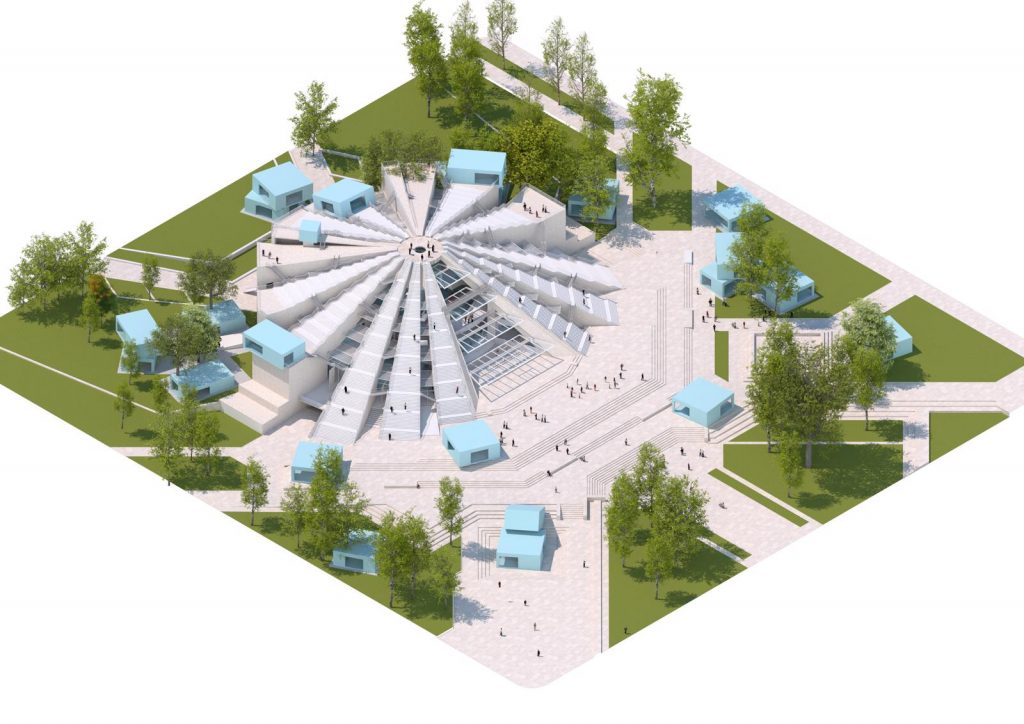
The Pyramid of Tirana by MVRDV
Exterior steps made using the stone tiles that originally adorned the façade as aggregate in the new concrete are added to the sloping concrete beams. The steps can be used for sightseeing and temporary events, as well as for literally walking over the pyramid. One of the beams will be preserved as a slope that visitors can slide down – at their own risk.
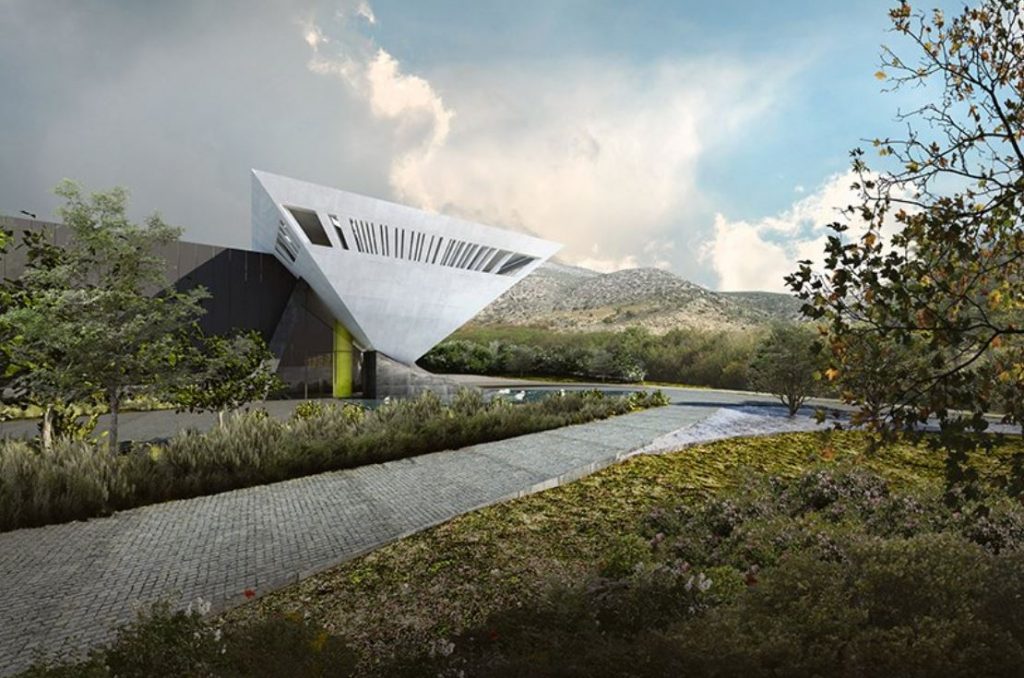
Industrial Complex in Megara by TAN (also header image)
Athens-based practice Tense Architecture Network (TAN) has used the pyramidal shape for design of the Industrial Complex in Megara to create a contrast to the conventional orthogonal corpus of the factory, where production takes place. The administrative hub of the complex is placed within a multi-faceted and inverted pyramid hinged at the building corner. Strongly sculpted, the expressive volume opposes the main body, standing freely as its point of entrance or its culminating end.
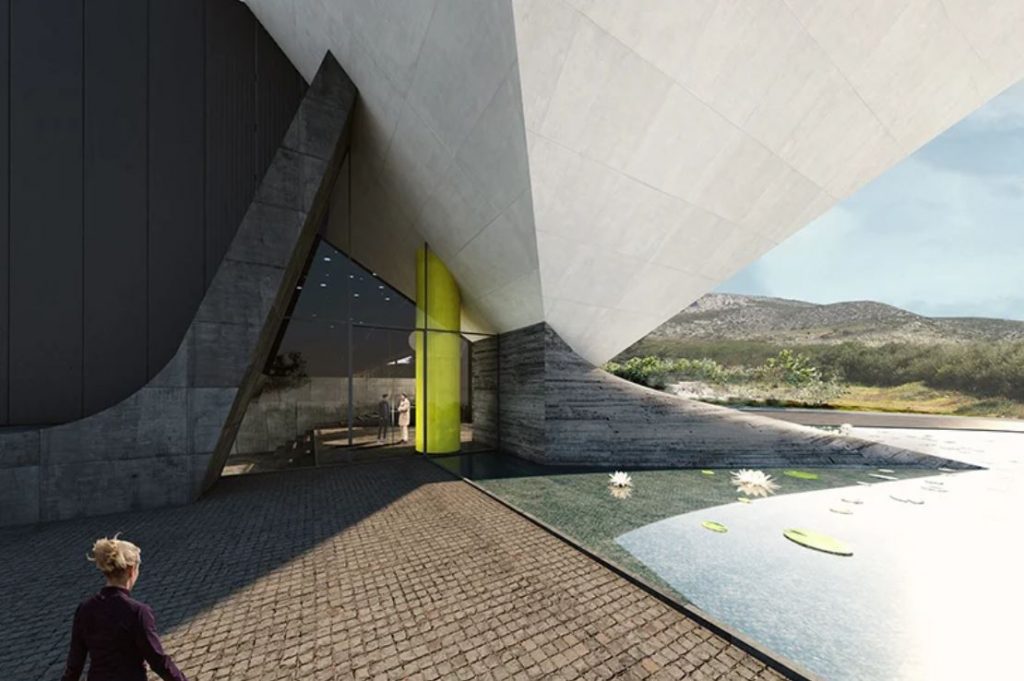
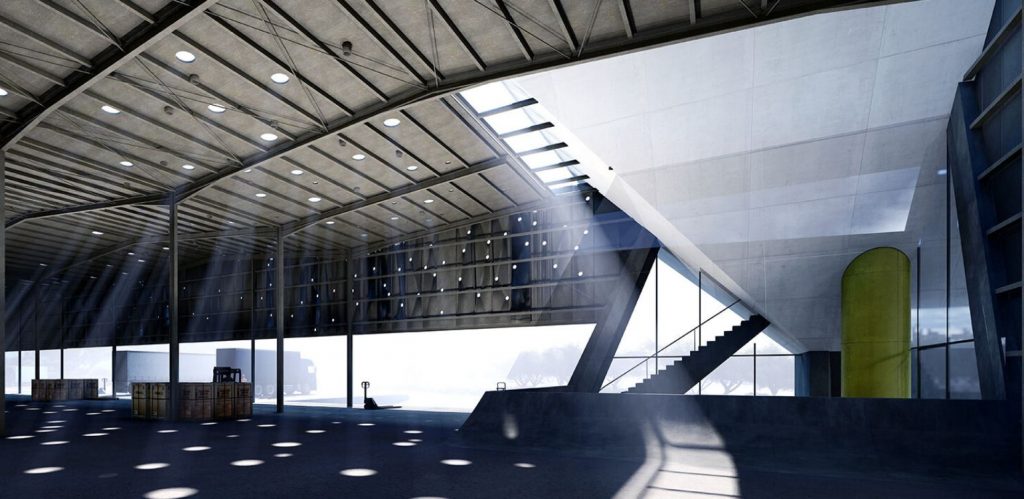
Industrial Complex in Megara by TAN
The inverted pyramid sculpted out of reinforced concrete has two levels. The upper one hosts the administrative offices and presentation and meeting rooms. One of its concrete buttresses serves as a staircase, while its supportive core is penetrated by the elevator. The hovering volume is lightly tinted – powerfully contrasting with its dark concrete base reflected in a curvilinear water feature.
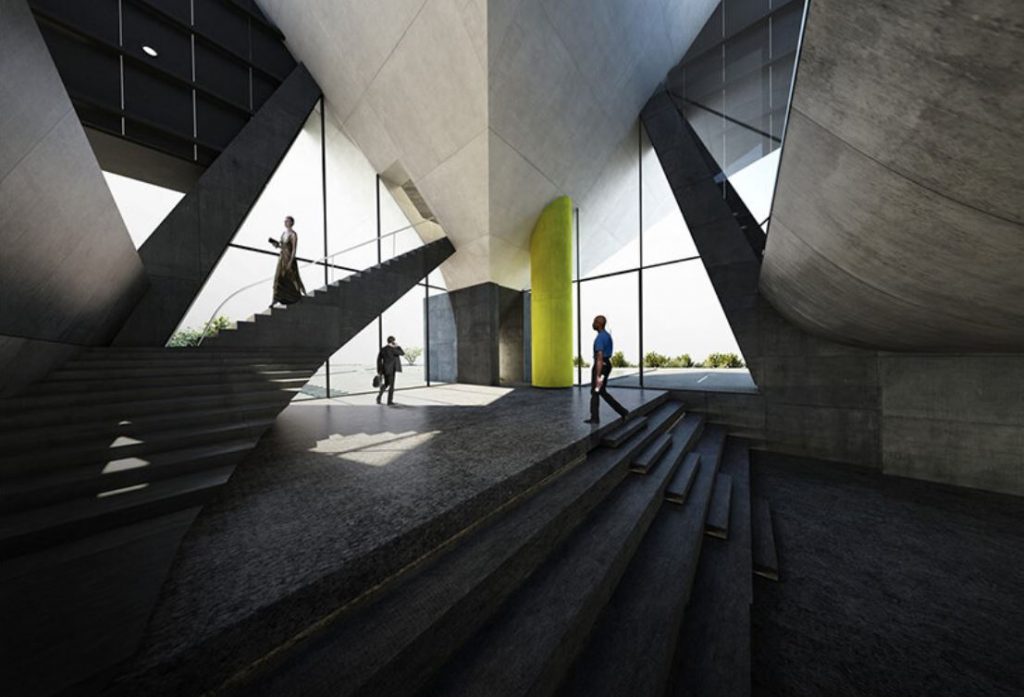
Industrial Complex in Megara by TAN
The façade and the rooftop of the main corpus are clad in perforated aluminum sheets that create an intricate shadowplay as the sun penetrates small circular holes and the lighting situation changes during the day, from sunset to sunrise.
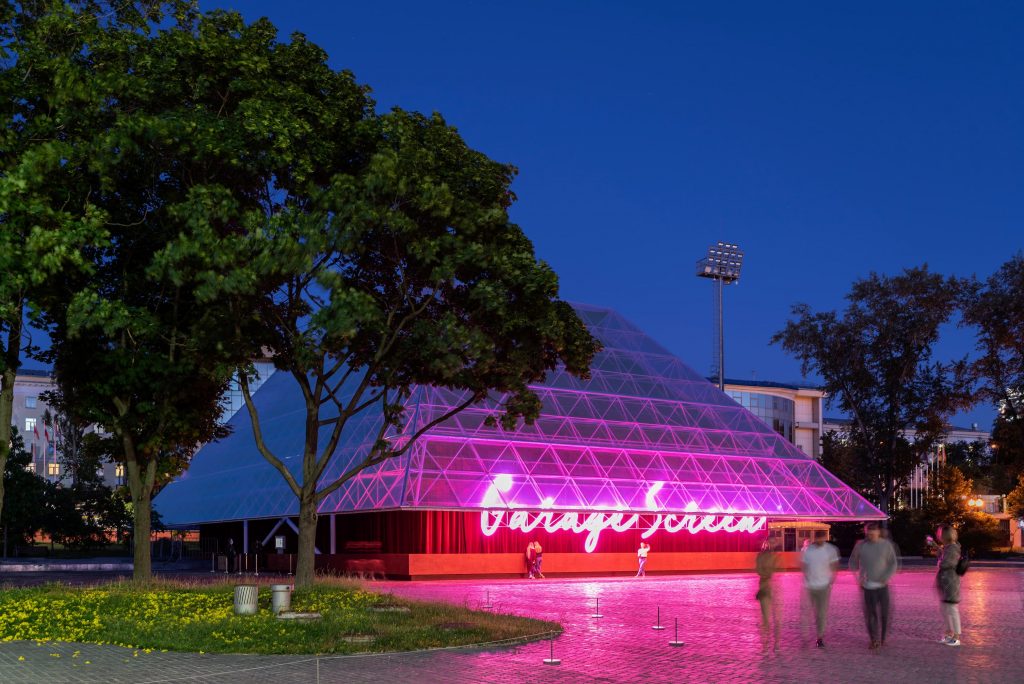
Garage Screen summer cinema pavilion by Syndicate Architects
Syndicate Architects’ winning proposal for the Garage Screen summer cinema pavilion designed to be built in front of the OMA-designed Garage Museum of Contemporary Art in Moscow comprises a truncated pyramid elevated off the ground and wrapped in holographic façades.
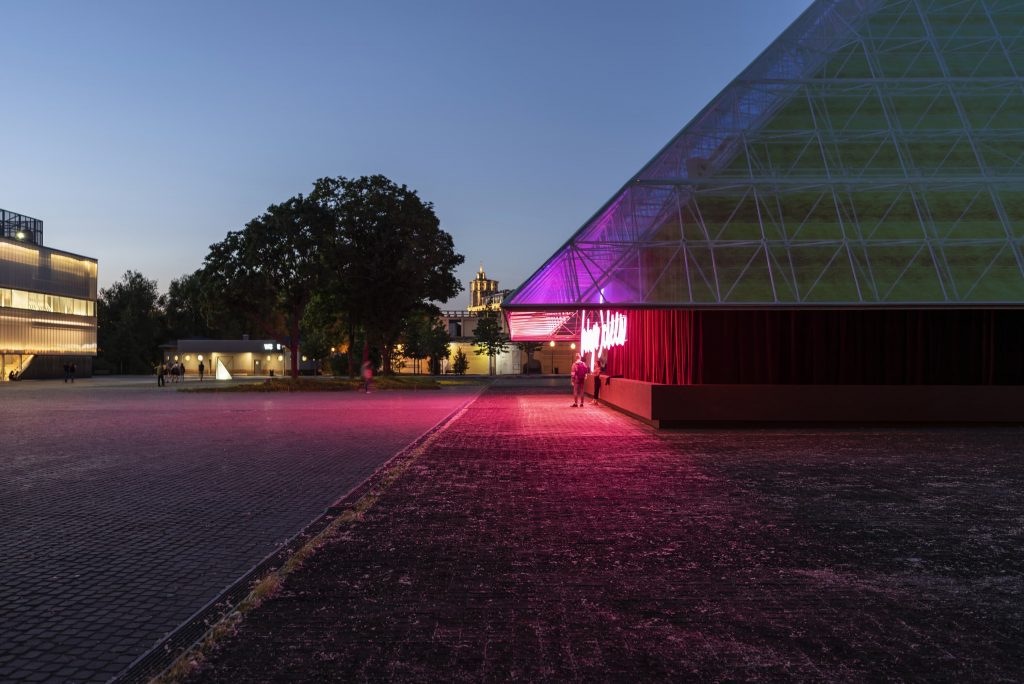
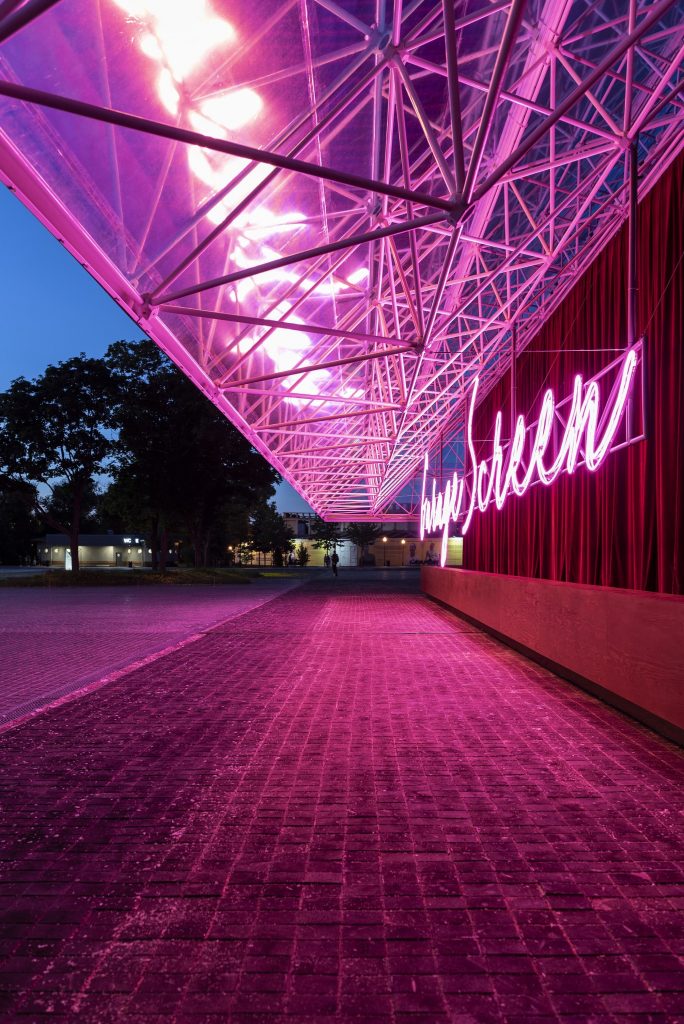
Garage Screen summer cinema pavilion by Syndicate Architects
Organized by Russian urban consulting company Strelka KB, the competition asked up-and-coming Russian architects to develop a multifunctional temporary summer cinema pavilion, which would be accessible to visitors with disabilities and meet the venue’s standards of environmental responsibility.
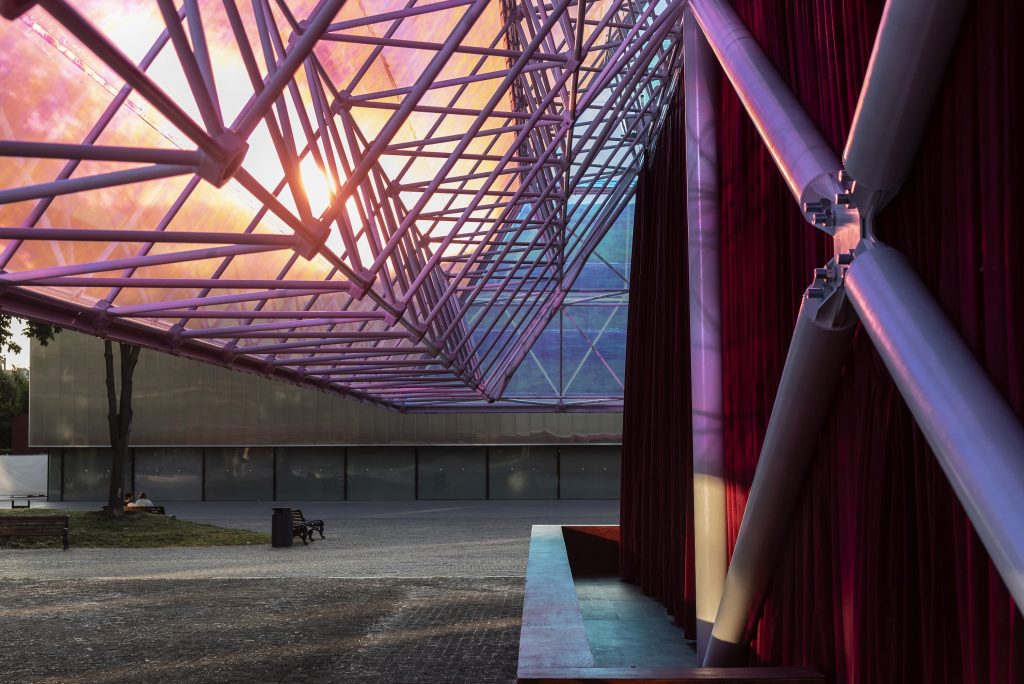
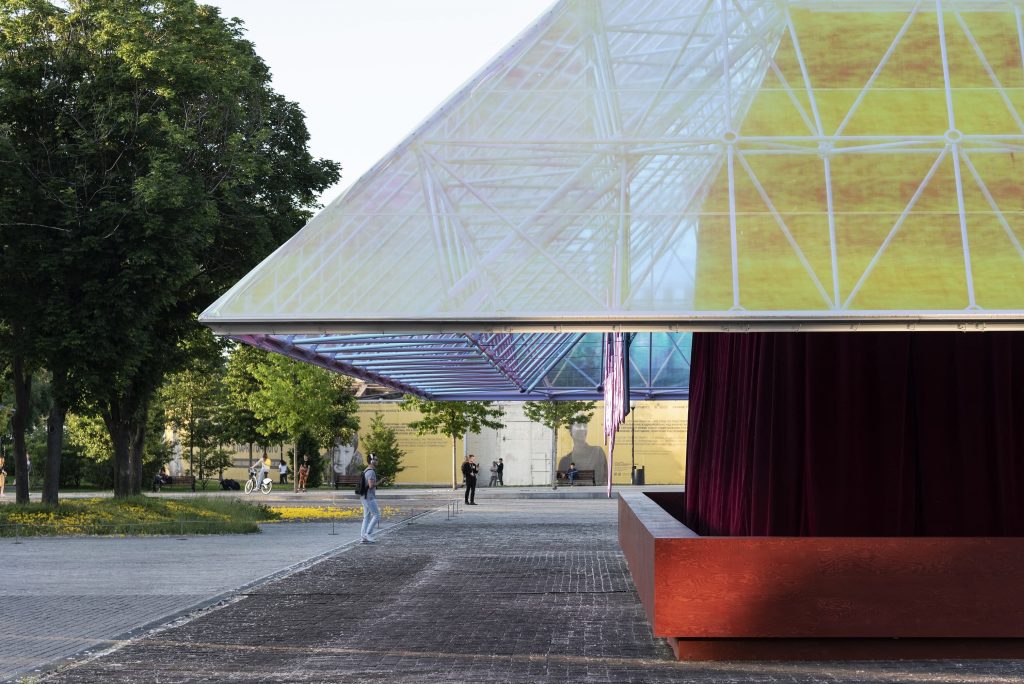
Garage Screen summer cinema pavilion by Syndicate Architects
The team has imagined the cinema theater as s a dynamic place that interacts with the surrounding context and is always changing depending on the angle of view. The design by Syndicate Architects characterized by a bold shape and materials that are not typical for summer cinemas allows for the structure to visually unfold into the park, while its holographic facades, garage screen neon sign hung at eye level, and red velvet curtains create a festive mood.